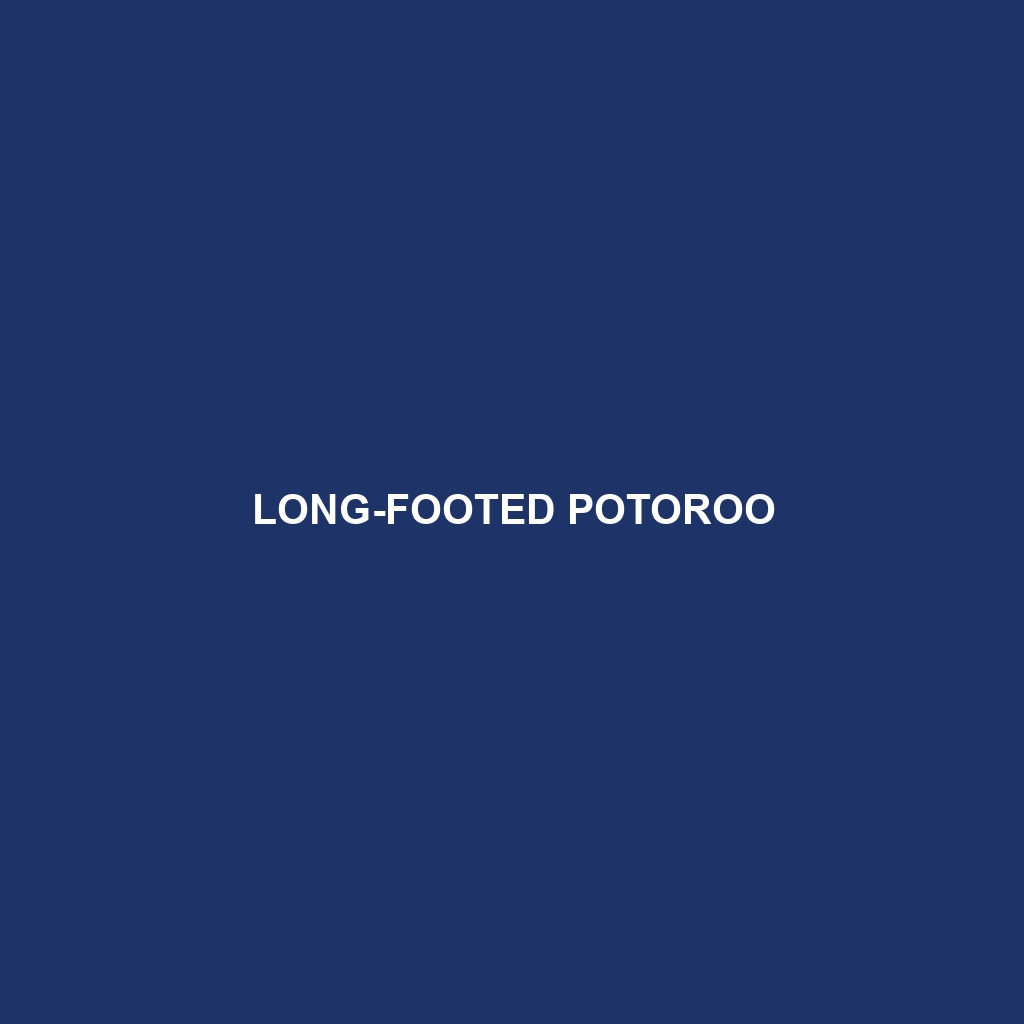Long-footed Potoroo (Potorous longipes)
The Long-footed Potoroo is a small, nocturnal marsupial endemic to southeastern Australia. Known for its elongated hind feet and secretive nature, this elusive creature plays a crucial role in forest ecosystems through its feeding and burrowing activities. Despite their inconspicuous presence, Long-footed Potoroos are vital to the health of their habitats, fostering symbiotic relationships with various plant species.
Physical Characteristics
Size: Adult Long-footed Potoroos typically weigh between 1.0 to 2.3 kilograms (2.2 to 5.1 pounds) and measure around 38 to 42 centimeters (15 to 16.5 inches) in body length, with a tail length of about 28 to 34 centimeters (11 to 13 inches).
Coloration: Their fur is predominantly greyish-brown on the back, blending to a softer, paler grey or off-white on the belly. This coloration provides excellent camouflage in their forested environments.
Special Features: The most distinctive feature is their long hind feet, which are adapted for efficient digging and foraging. They also have a prehensile tail that aids in balance and carrying nesting materials.
Behaviors
Social Interactions: Long-footed Potoroos are generally solitary creatures, though they may exhibit overlapping home ranges. They communicate through scent markings and vocalizations, particularly during mating seasons.
Feeding Habits: These marsupials primarily feed on fungi, which they unearth using their elongated feet. They also consume a variety of roots, tubers, and small invertebrates, contributing to soil turnover and seed dispersal.
Ecological Roles: By foraging for fungi, Long-footed Potoroos act as natural gardeners, aiding in the spread of mycorrhizal fungi that form beneficial relationships with plant roots, enhancing nutrient uptake for forest trees.
Habitats and Adaptations
Habitats: Long-footed Potoroos are typically found in moist, dense forests and woodlands with abundant ground cover. They prefer areas with thick underbrush, which offers protection from predators and harsh environmental conditions.
Adaptations: Their elongated feet and claws are specially adapted for digging and foraging. Their nocturnal lifestyle helps them avoid many predators, and their cryptic coloration provides additional camouflage.
Conservation Status
Current Status: The Long-footed Potoroo is listed as Endangered on the IUCN Red List due to habitat loss, predation by introduced species like foxes and feral cats, and environmental changes.
Conservation Efforts: Various conservation programs are in place to protect their remaining habitats and manage predator populations. Efforts also include habitat restoration and research into their ecology and behavior to inform future conservation strategies.
Fun Facts
Unique Diet: Long-footed Potoroos are one of the few mammals that predominantly feed on fungi, making them a key species for studying the ecological importance of mycophagy (fungus-eating).
Ecosystem Engineers: By burrowing and foraging, they significantly impact soil composition and structure, which benefits various plant species.
Longevity: In the wild, they can live up to 7 years, but some have been known to live longer in protected environments.
The Long-footed Potoroo is a remarkable example of the intricate balance within forest ecosystems. Its unique adaptations and ecological roles underscore the importance of conserving this endangered species and its habitat for future generations.
